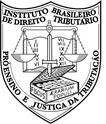The Relationship between Abuse of Law, Tax Evasion, and Licit Tax Planning
DOI:
https://doi.org/10.46801/2595-6280.57.4.2024.2269Keywords:
Italy, tax planning, abuse of law, Italian GAARAbstract
The article examines the issue of delimiting the boundaries between the abuse of law and related institutes, such as licit tax planning and tax evasion, highlighting how new Italian GAAR provisions are aligned with the abuse of law foundations: from the coordination of these provisions with those that outline the concept of abuse, it follows, in particular, that, on the one hand, the inner circle abuse is not the simple tax advantage, but its execution in an illegitimate way, which is exactly the boundary between abuse and licit tax planning; that, on the other hand, that illicit tax economy can never be illegitimate, being the existence (or not) of a tax provision violation the limit between abuse and tax evasion. The article’s central part delimits the spectrum of conduct that cannot be classified as abusive, since they are lato sensu evasion, emphasizing the criminal irrelevance of the conduct and the reasons why violations of specific anti-elusive rules are also included in this sphere; moreover, it illustrates the consequences of the possible confusion between abuse and evasion in the tax assessment, highlighting the impossibility for a tax court to maintain tax assessments that, in cases of tax evasion, are also or only based on abuse of law. In contrast, after having outlined the distinction between licit tax planning and the abuse of law, the criteria to be used for such differentiation are illustrated, firstly, by considering as conducts subsumed in the first figure, all – and only – those that might not characterize a hypothesis of overinclusion when compared to the rule’s purpose; and, secondly, by critically examining certain past cases that were solved against the taxpayer’s interests. In the last part, the relations of the art. 10-bis, as GAAR, with the tax rules that have been, until today, distorted for anti-abuse purposes (art. 20 della legge di registro e l’art. 37, 3º comma, del d.p.r. n. 600/73), as well as with those with an anti-avoidance ratio are analyzed.
Published
How to Cite
Issue
Section
License
Copyright (c) 2024 Angelo Contrino; Marina Righi

This work is licensed under a Creative Commons Attribution-NonCommercial-ShareAlike 4.0 International License.
O autor (ou coautor) declara que o artigo submetido à avaliação, que segue em anexo, é de sua autoria, e inédito, comprometendo-se a não publicar este artigo em qualquer outro meio, impresso ou digital, mantendo a exclusividade para a Revista Direito Tributário Internacional Atual, cedendo, em caso de aprovação do trabalho, os direitos autorais à Revista para fins de publicação do trabalho nesta edição.





